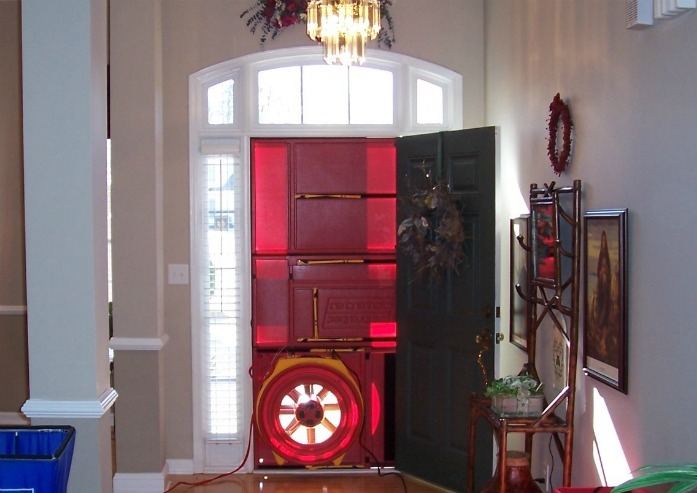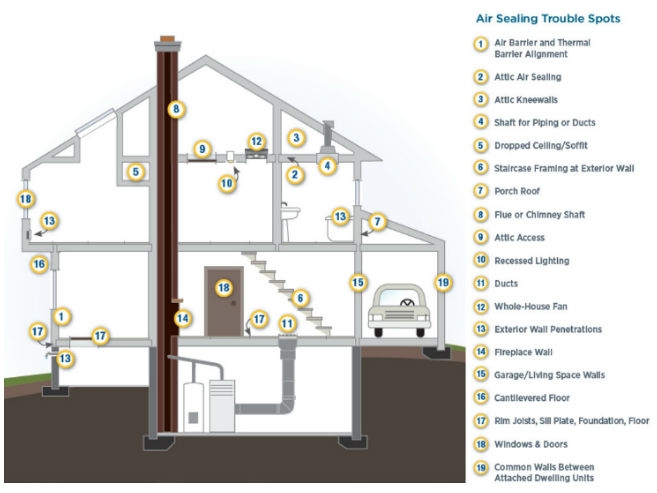Blower Door Testing
We are certified HERS raters through RESNET and have been passionate about making buildings the best they can be since inception.
Blower door testing is useful in establishing how tight a home is and where are leaks maybe present. We use specialized equipment to create negative pressure within your home for evaluation and performance.
These are some reasons for establishing the proper building tightness:
- Reducing energy consumption due to air leakage
- Avoiding moisture condensation problems
- Avoiding uncomfortable drafts caused by cold air leaking in from the outdoors
- Determining how much mechanical ventilation might be needed to provide acceptable indoor air quality.
How it works
A blower door is a powerful fan that mounts into the frame of an exterior door. The fan pulls air out of the house, lowering the air pressure inside. The higher outside air pressure then flows in through all unsealed cracks and openings. Wit calibrated blower door fans, we can now determine the infiltration rate with of the structure.
We can also, as the fan is running, move from room to room throughout the house to detect and diagnose air leaks.
Sometimes it’s possible to literally see or hear where air is coming into the house. We also use heatless smoke tools to pinpoint leak locations, as the smoke will be sucked out through the leakage point. Technicians may also use a special camera that’s super-sensitive to differences in temperature. Surface temperatures show up in contrasting colors, indicating a possible air leakage point.
The Results
We determine the Air Changes Per Hour at a pressure difference of 50 Pascals (ACH50). This gives us a score to determine the tightness of your house.
Here are some comparison points to help interpret an ach50 reading:
- A 2002 study of 24 new Wisconsin homes showed a median air leakage of 3.9 ach50.
- New home builders in Minnesota routinely achieve 2.5 ach50.
- The Canadian R-2000 program has an airtightness standard of 1.5 ach50.
- The Passivhaus airtightness standard — a tough standard to achieve — is 0.6 ach50.
If the house is leaky enough, we determine a plan to efficiently locate and seal the leaks. Blower-door-directed air sealing is done while the house is depressurized to about 30 Pascals. The most important areas to seal air leaks are down low — in the home’s basement or crawl space — and up high — at the attic floor. Because of the stack effect, leaks in these areas matter much more than leaks in the middle of the house, where there isn’t as much of a difference in air pressure between the indoors and outdoors.
Contrary to popular belief, the gaps around windows and doors are not responsible for most of a home’s air leaks. Air leaks in the following areas are usually much more significant:
- Basement rim joist areas;
- Holes cut for plumbing traps under tubs and showers;
- Cracks between finish flooring and baseboards;
- Utility chases;
- Plumbing vent pipe penetrations;
- Kitchen soffits;
- Fireplace surrounds;
- Recessed can lights; and
- Cracks between partition top plates and drywall.



